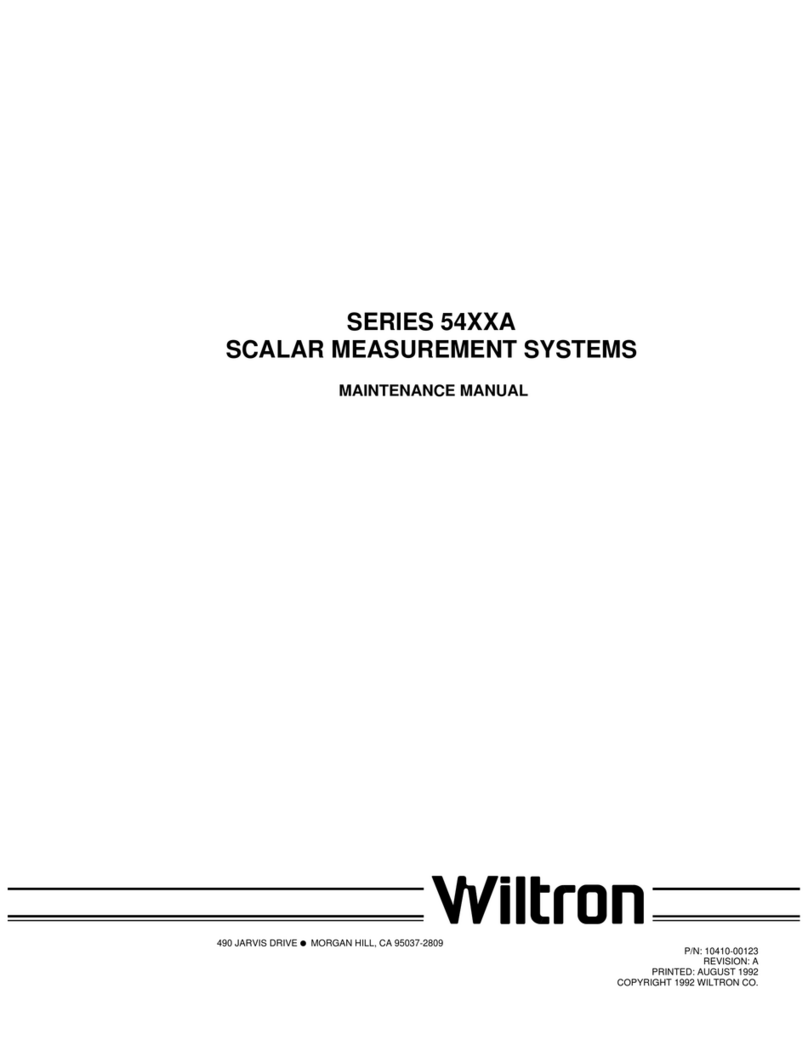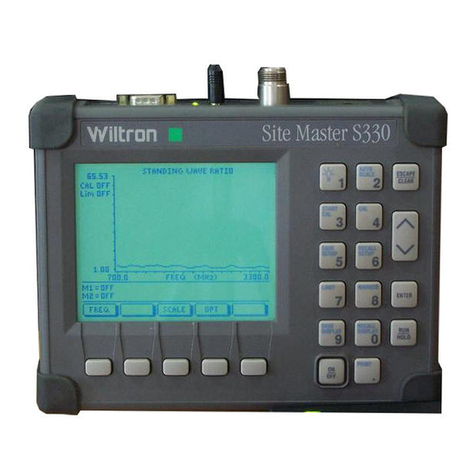
4. EXPLANATION OF SWR
AUTOTESTER AND BRIDGE
SPECIFICATIONS
Certain key specification terms are explained below.
a. Accuracy. This three-element term defines
the accuracy with which an SWR Autotester or
bridge can make a reflected signal measure-
ment. The three elements (0.01 ±0.06 ρ2) are
described below.
1st Element: (0.01) is the directivity of the SWR
Autotester or bridge expressed as a reflection
coefficient (40 dB for this example, see Table 6).
2nd and 3rd Elements: ±0.06ρ2is the deprecia-
tion in accuracy due to test port mismatch (im-
pedance discontinuity). Element 2 (0.06) is the
inherent test port mismatch expressed as a re-
flection coefficient. The 3rd element, rho (ρ), is
the reflection coefficient of the device under test
(DUT). The entire expression describes the
measurement uncertainty caused by the re-
flected signal being re-reflected by the test port
mismatch.
b. Directivity. A figure of merit expressed in dB.
This figure represents the ratio of the power
levels as seen at the output port when (1) the
test port signal is fully reflected, and (2) the test
port is perfectly terminated.
c. Frequency Sensitivity. The maximum varia-
tion in output power/voltage that can be ex-
pected due to a change in frequency over the
specified range when the input power is held
constant
d. Output Time Constant. The amount of time
required for the selected output pulse to either
rise from the 10% to the 90% point or fall from
the 90% to the 10% point on the waveform.
5. PRECAUTIONS
The SWR Autotesters and bridges are high-quality,
precision laboratory instruments and should receive
the same care and respect afforded such instru-
ments. Complying with the following precautions
will guarantee longer component life and less equip-
ment downtime due to connector failure. Also, such
compliance will ensure that SWR Autotester or
bridge failures are not due to misuse or abuse—two
failure modes not covered under the WILTRON war-
ranty.
a. Beware of Destructive Pin Depth on Mating
Connectors. Before mating, measure the pin
depth (Figure 2) of the device that will mate with
the SWR Autotester or bridge, using a WILTRON
Pin Depth Gauge (Figure 3) or equivalent. Based
on SWR Autotesters and bridges returned for
repair, destructive pin depth of mating connec-
tors is the major cause of failure in the field. (A
destructive pin depth has a center pin that is too
long in respect to the connector’s reference
plane.) When the SWR Autotester or bridge is
mated with a connector having a destructive pin
depth, damage will likely occur to the SWR
Autotester or bridge.
The center pin of SWR Autotester or bridge con-
nectors has a precision tolerance measured in
mils (1/1000 inch). Connectors on test devices
that mate with SWR Autotesters and bridges
may not be precision types and may not have the
proper depth. They must be measured before
mating to ensure suitability. When gauging pin
REFERENCE
PLANE
MALE
PIN
DEPTH
(INCHES)
REFERENCE
PLANE
FEMALE
PIN
DEPTH
(INCHES)
Figure 2. N Connector Pin Depth Definition
Figure 3. Pin Depth Gauge
4SWR OMM
































